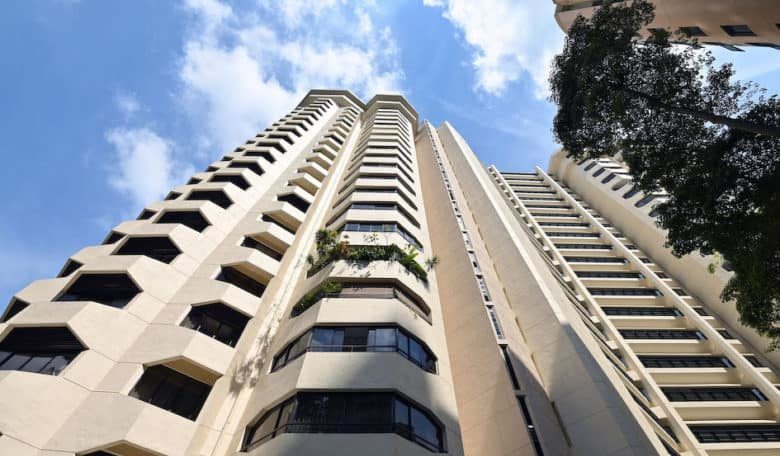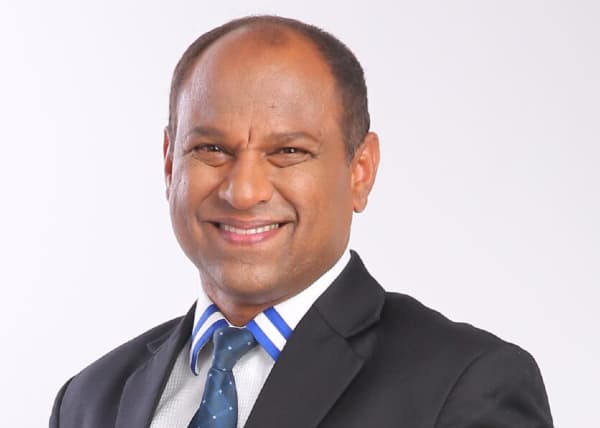
Singapore’s rising home prices inspired Hong Kong’s Shun Tak to buy the High Point tower near Orchard Road
Singapore’s residential market went from hot to scorching in November as hungry homebuyers and limited supply of new homes combined to drive the volume of new homes sold and prices for second-hand condos to multi-year highs, according to a pair of separate surveys.
“November’s new home sales were stellar, ensuring that we finish 2021 on a strong note,” PropNex Realty CEO Ismail Gafoor said in a press release. “The healthy demand for new homes and declining supply of unsold inventory should continue to support developers’ confidence in their upcoming project launches and when they assess land sites for acquisition.”
Last month marked the strongest November sales performance for developers since 2011 when 1,702 homes exchanged hands, with the recent wave supported by the launch late last month of CDL and CapitaLand’s 696-unit CanningHill Piers at Clarke Quay and privately held developer JBE Holdings’ 219-unit The Commodore at Canberra Drive with these new projects already accounting for nearly half of the month’s overall sales.
Resale prices of condominiums in Singapore increased by an average of 0.8 percent last month from October, rising for the 16th month in the lengthiest crescendo in eight years according to the latest price index by 99.co and SRX Property published Tuesday. Year on year, the average cost of a second-hand home went up 9.3 percent In November from the same period one year ago, as prices continued to climb across all three regions of the city.
New Home Sales Double
In the new home segment, a survey by the country’s Urban Redevelopment Authority (URA) showed robust sales in November, with the number of new homes sold, excluding hybrid public/private executive condo units, surging by 70 percent from October to reach 1,547 units, or more than double the 774 homes sold in November last year.

Ismail Gafoor of PropNex Realty
The CanningHill Piers project on Clarke Quay moved 576 units at a median price of $2,887 per square foot, followed by The Commodore in northern Singapore’s Sembawang area which sold 70 percent of the available units on its opening weekend. The November performance brought Singapore’s sales of new homes in the first 11 months of the year to 12,467 units, excluding executive condos, which was up 42 percent from the 8,807 homes sold in the same period last year.
While December sales are likely to moderate this holiday season, Mohan Sandrasegeran, research and content analyst at agency Ohmyhome predicts that, excluding executive condos, Singapore developers will end 2021 with 13,000 new homes sold, which will be 30 percent more than last year’s total of 9,982 units and the largest sum since 2013 when 14,948 units were changed hands.
For Christine Sun, senior vice president of research and analytics at OrangeTee & Tie, this year could end with sales of 13,000 to 13,300 units, with the analyst warning homebuyers to brace for pricier homes next year as developers prepare to launch just 30 new projects, compared to the 50 brought to market in 2019.
Resale Prices Rise, Collective Sales Surge
Ying Khuan Pow, head of research at 99.co, pointed to low mortgage rates, Singapore’s resilient economy and labour market, and tightening supply as the main drivers for the rise in second hand condo prices, which was led by rates for homes in Singapore’s suburban areas, or outside central region (OCR) under the naming system used the URA, which registered a one percent uptick on the company’s index from a month earlier.
The city’s rest of central region (RCR), which includes mid-tier markets Marina South, Queenstown, Fort Canning and Upper Bukit Timah, among other districts, was next on the list, reporting an average 0.6 percent price increase from the preceding month.
The slowest price growth of 0.3 percent was recorded in the core central region (CCR), which is composed of traditional prime markets like Districts 9, 10 and 11, as well as the Downtown Core Planning Area and the posh Sentosa island.
Annual price increases in the city’s main regions followed a similar curve, with OCR prices rising by 9.9 percent compared to November 2020, while tariffs in the RCR grew by 8.8 percent and costs in the CCR climbed 8.6 percent.
In terms of volume, the index showed the number of units resold in all regions went up by 2.4 percent to 1,636 in November from 1,598 in October and increased 21.8 percent higher year on year. This was also driven by sales generated outside core markets, with nearly 60 percent of the total coming from the OCR area, 26 percent from RCR and the rest from the CCR.
“Looking ahead into the next year, we are expecting condo resale prices to either experience moderate rises or stabilise around current levels,” Pow said. “If the current recovery of the domestic economy and labour market continue, the condo resale market may stay fairly buoyant in the coming year – especially if mortgage rates remain near current lows and substantial reopening continues to boost economic recovery.”
Pow added that the sustained upward pricing trend has been a key motivator for homeowners to put their aging residential towers up for collective sale, with developers snatching up sites, as the available pool of unsold private residential units remained low at 17,165 in the third quarter.
In the past three months, there were at least five successful collective sales led by Hoi Hup Realty’s S$815 million ($600.2 million) purchase of a Thiam Siew Avenue project last month.
That transaction was followed soon after by a successful bid from a consortium led by companies controlled by mainland billionaire Gordon Tang picking up a mixed-use site in District 9, and Hong Kong’s Shun Tak buying the 22-storey High Point near Orchard Road for S$556.7 million last week.
Leave a Reply